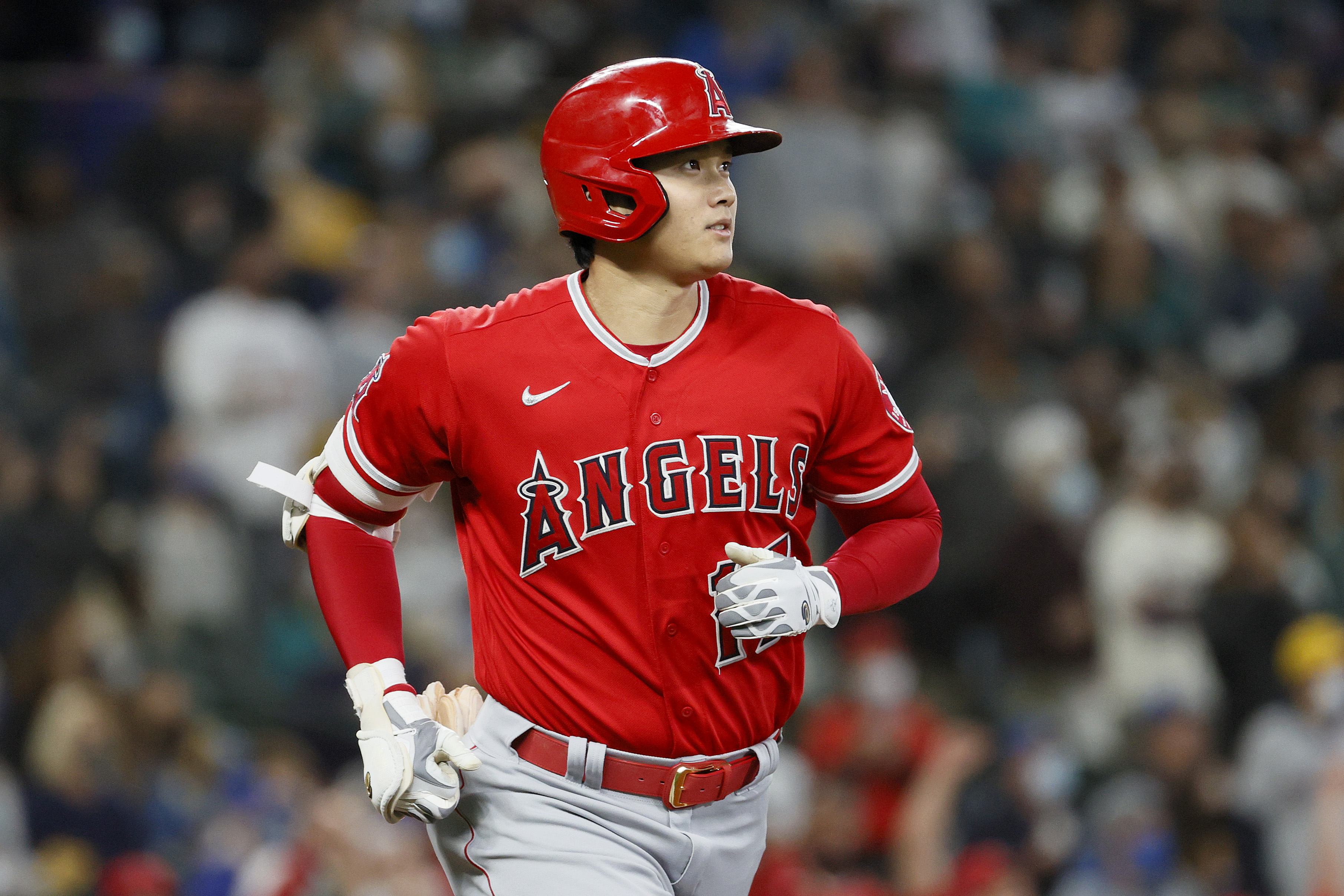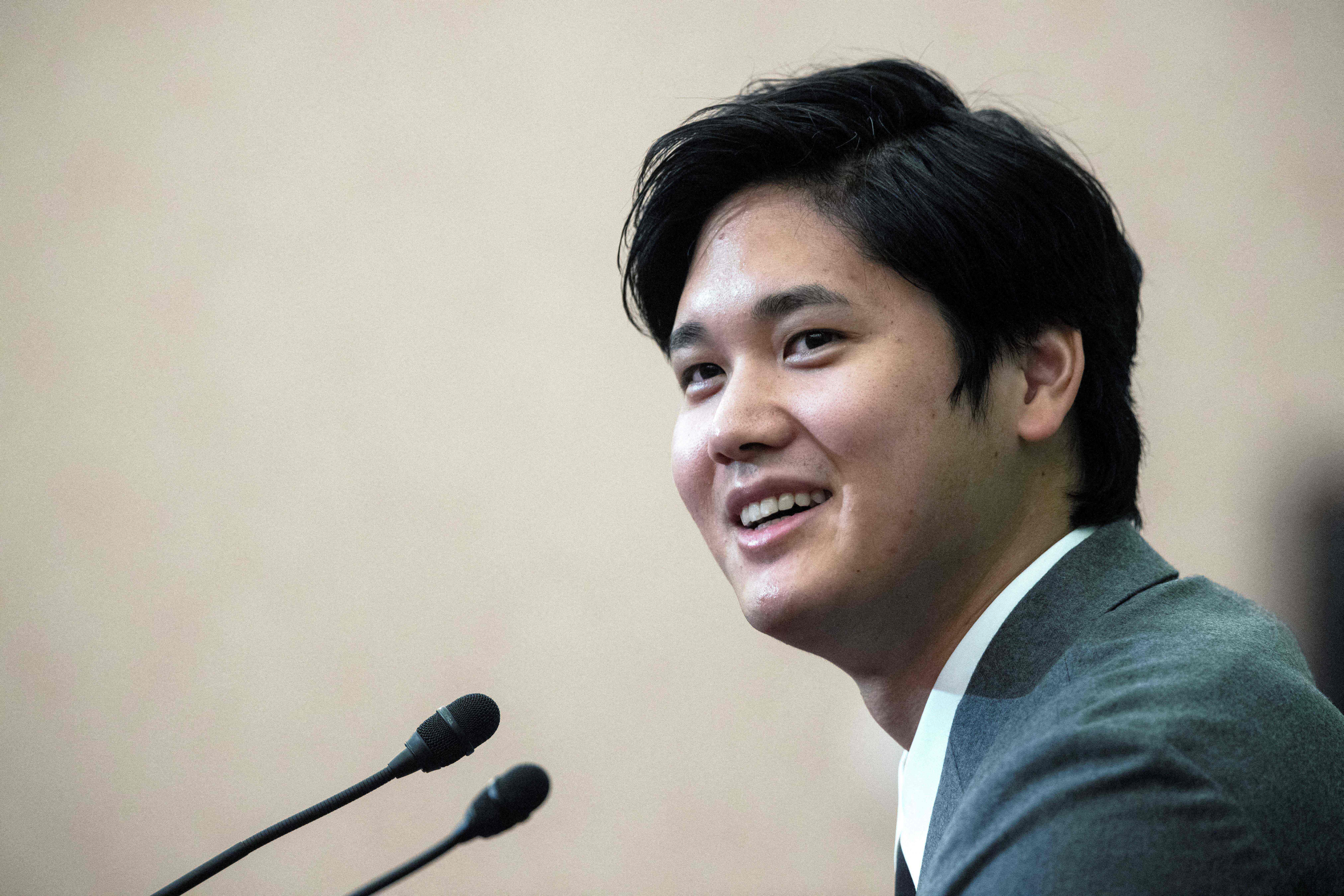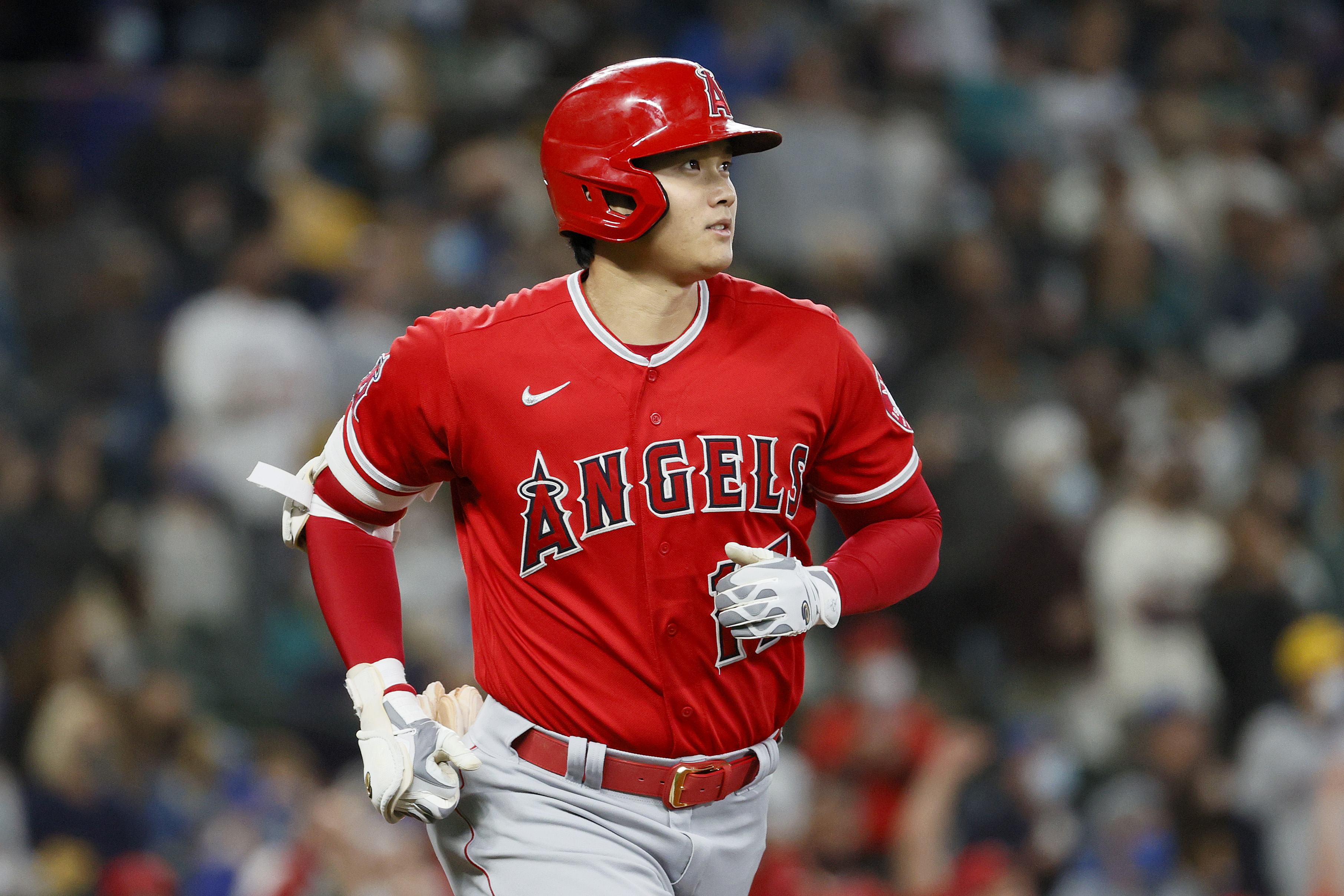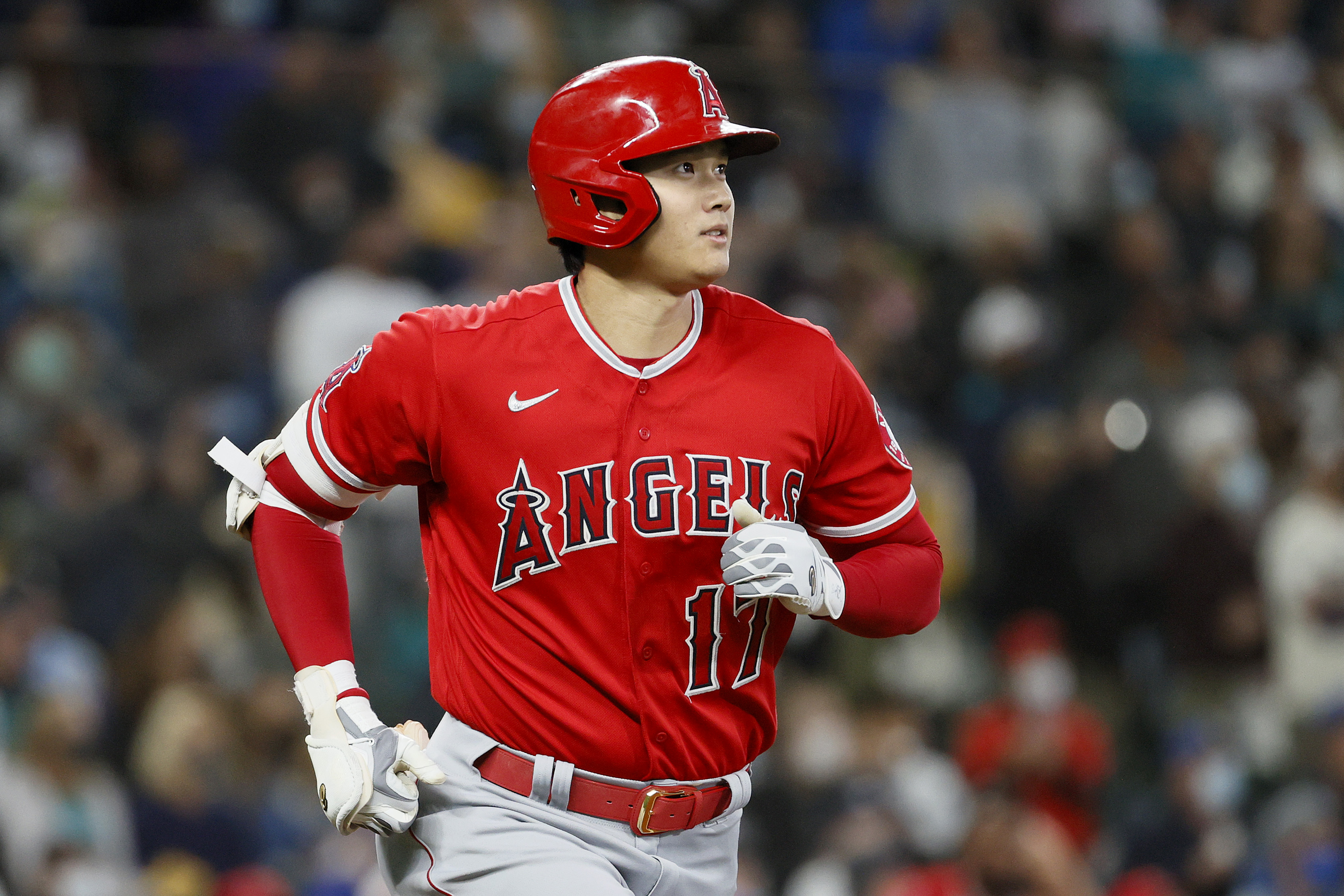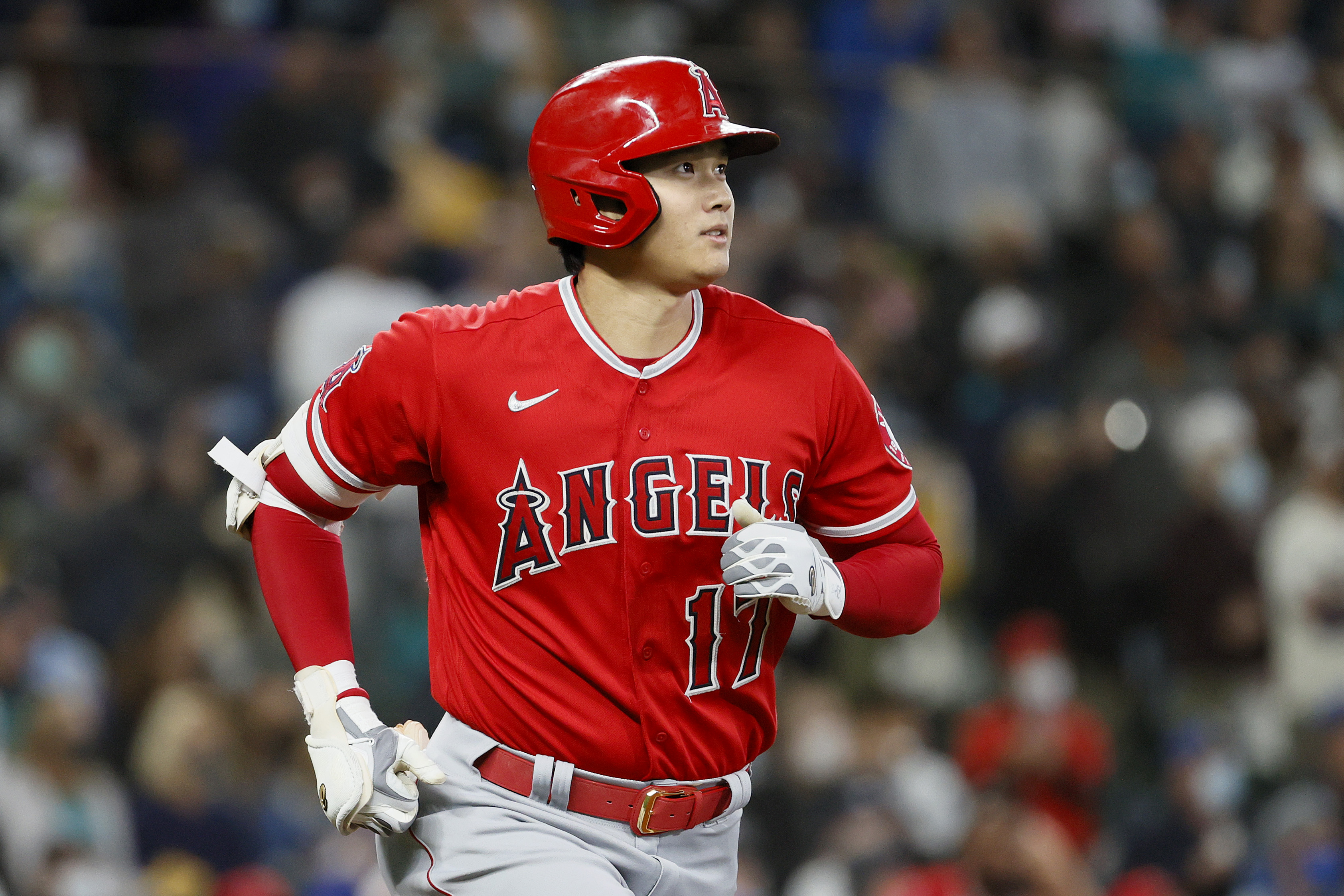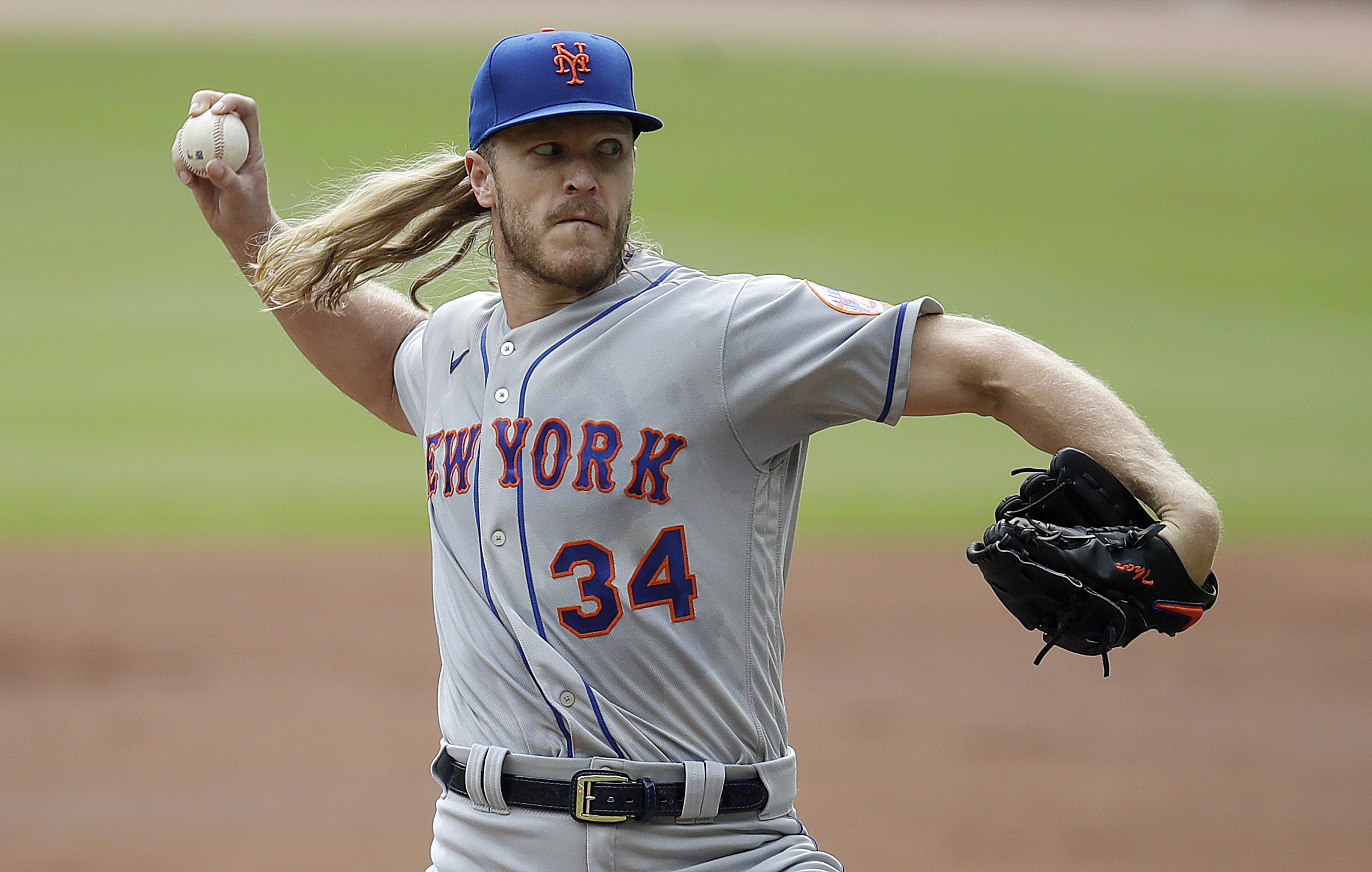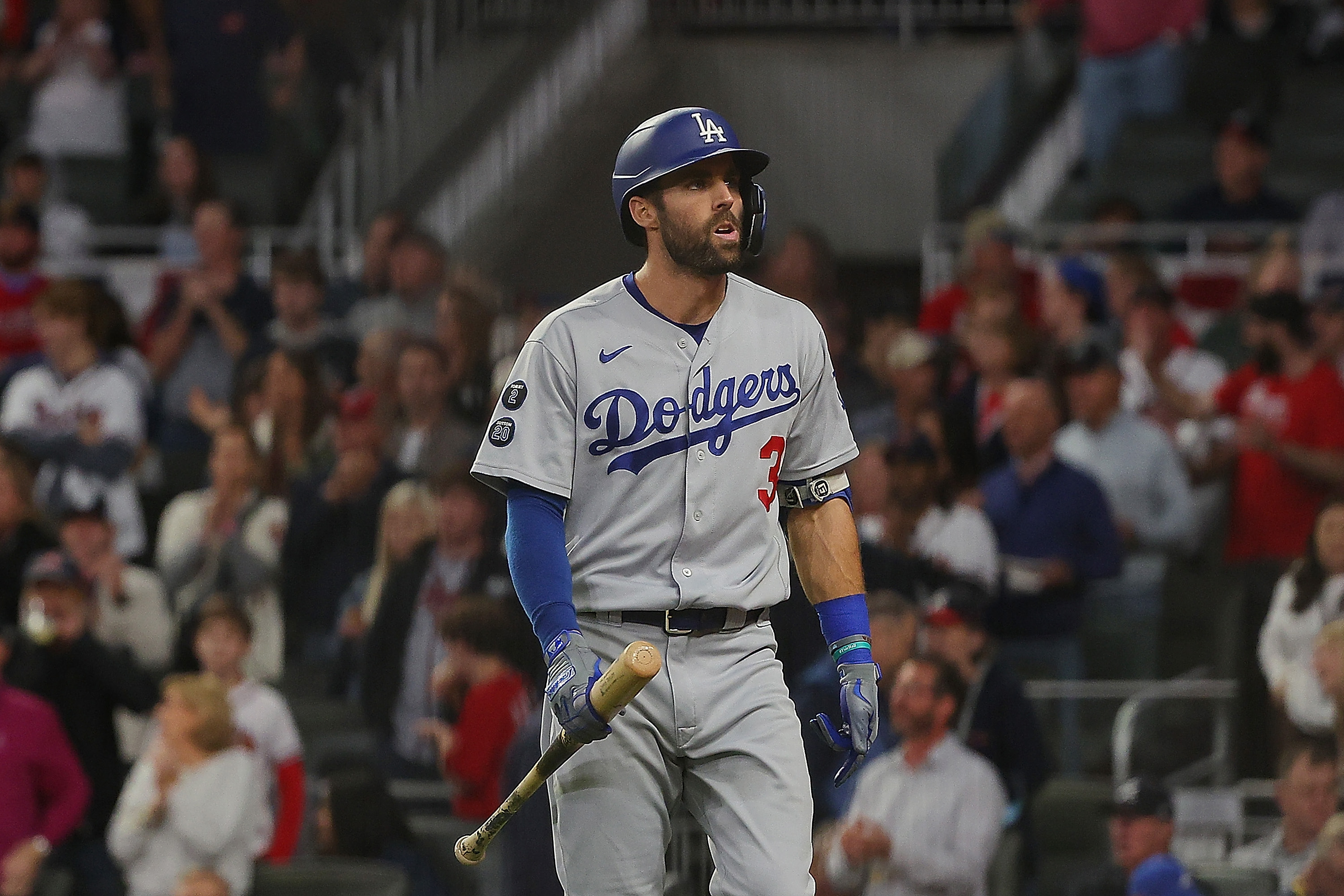Is It Possible For Angels' Shohei Ohtani to Be Even Better in 2022?
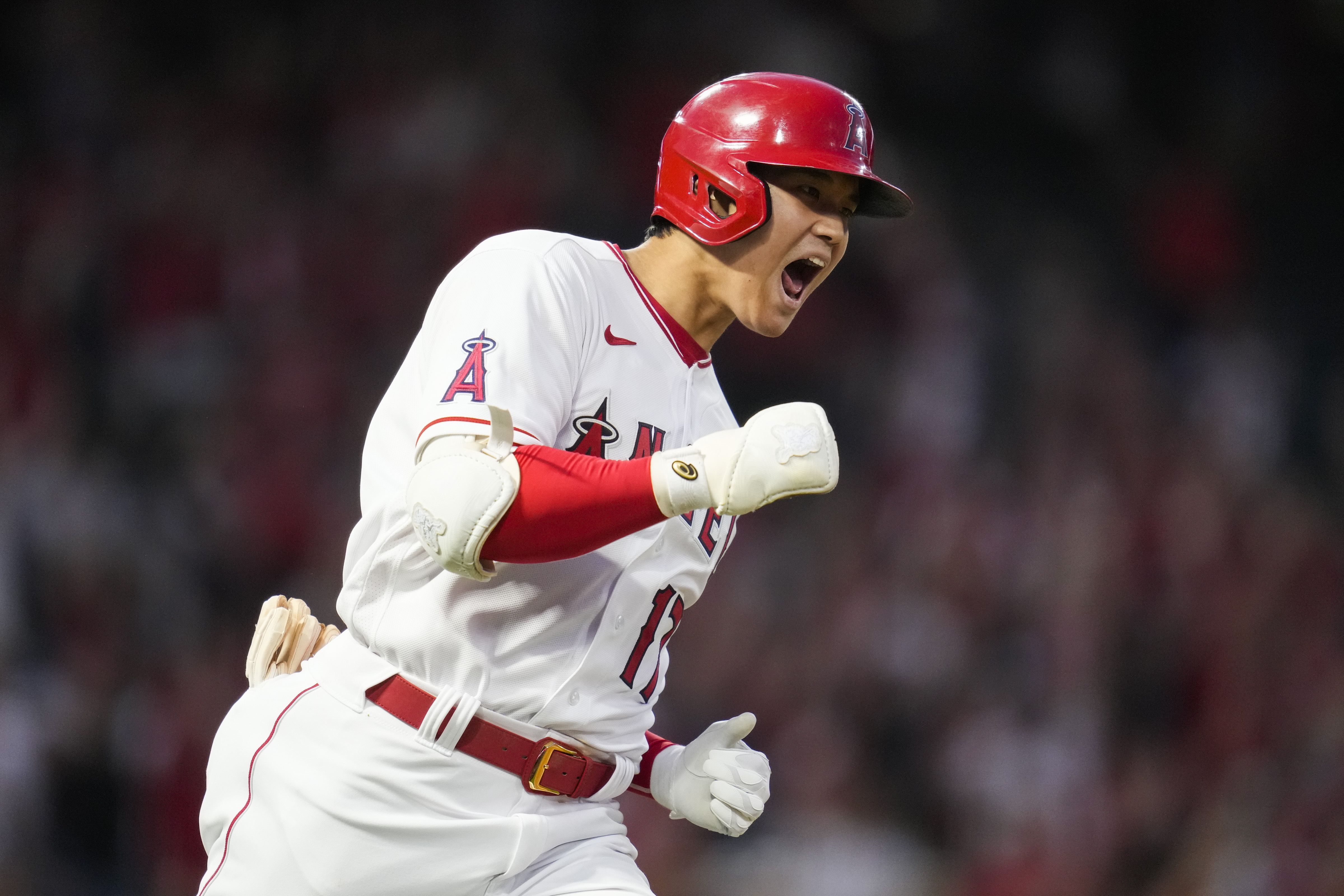
How do you repeat a season unlike any other in the history of Major League Baseball, much less improve on it?
Unprecedented challenge, meet Shohei Ohtani.
Though nobody has seen Ohtani on the field since he concluded his 2021 season on Oct. 3, the Los Angeles Angels' slugger-slash-ace has remained plenty visible as he's racked up accolades throughout the winter. In November, the American League MVP. In December, the AP Male Athlete of the Year.
And on Monday, even MLB's ongoing lockout didn't stop the league from revealing Ohtani as the cover athlete for MLB The Show 22:
“I don’t think I’ll ever get used to the spotlight,” Ohtani told Sam Blum of The Athletic. The 27-year-old also addressed one of the only things he hasn't done yet, which is sign a long-term contract with the Angels. He said those talks have yet to take place.
In fairness to the Angels, there's no easy way to calculate the value of a guy who basically broke baseball in 2021. By way of his 158 OPS+, 46 home runs and 26 stolen bases, Ohtani was one of the league's best offensive players. He was also no slouch when he moonlighted as a pitcher, posting a 141 ERA+ with 156 strikeouts over 130.1 innings.
Though he was more Bullet Rogan than Babe Ruth, the ultimate truth is that stateside baseball had never before seen such extraordinary two-way stardom. It was so extraordinary, in fact, that it's reasonable to wonder if down is the only way Ohtani can possibly go next.
At least in theory, though, there are ways up.
How Ohtani, the Hitter, Might Improve
If there's one thing Ohtani doesn't need to do better, it's hit the ball hard.
It's perhaps stating the obvious to say that he did this well amid a 46-homer season, but the specifics are eye-popping nonetheless. He ended 2021 in the 97th percentile for hard-hit rate and the 98th percentile for exit velocity, not to mention the 100th percentile for barrels.
What are barrels? Just batted balls whose launch angle and exit velocity result in at least a .500 batting average and 1.500 slugging percentage. These accounted for 22.7 percent of Ohtani's batted balls in 2021, the third-highest rate among qualified hitters since Statcast debuted in 2015.
There's also where Ohtani tended to barrel the ball. Of his 78 barrels, 52 were against pitches in the upper two-thirds of the strike zone. No left-handed hitter had done that before him, which captures how well suited his swing is to an era in which pitching is more north-south than east-west.
Now all he needs is some consistency, because there's just no ignoring how much his production tapered off down the stretch of 2021:
- First 95 G: 1.058 OPS, 37 HR
- Last 60 G: .798 OPS, 9 HR
On a positive note, there were things Ohtani did well in those last 60 games. He was actually a tougher out, going from a .367 OBP to a .381 OBP in part thanks to fewer strikeouts and more walks. If the Angels get more of the same in 2022, well, great.
All the same, his power drop-off was all the more cringeworthy because of how it happened. Whereas they had previously been more like daily vitamins, fastballs became his Kryptonite:
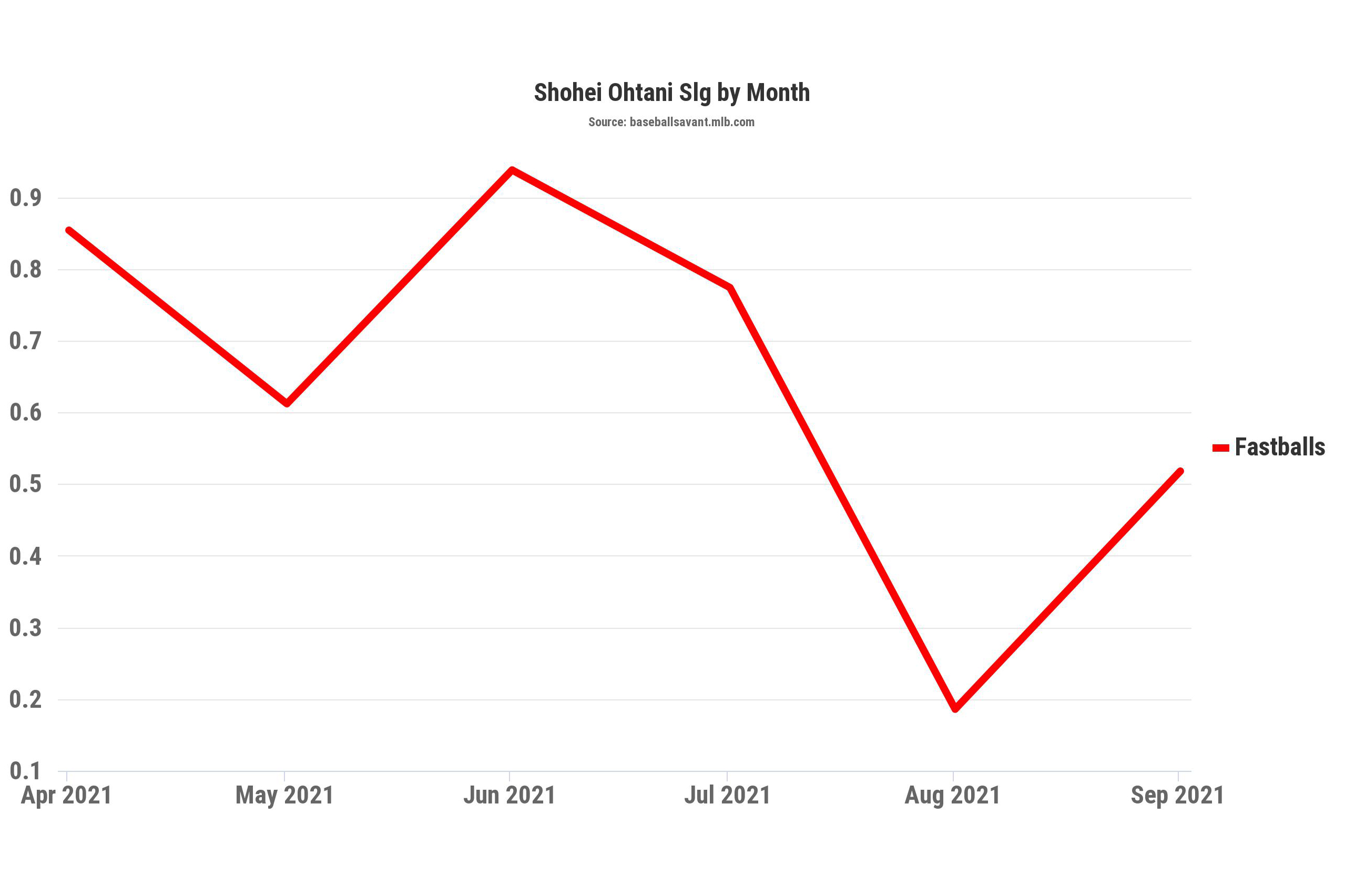
One possible explanation is that Ohtani was slow to adjust to pitchers who had adjusted to him.
They essentially stopped playing the north-south game, opting for more of an east-west approach fueled by a steady diet of fastballs away. Through July 28, only 42.7 percent of the fastballs he saw were on the outer third of the zone and beyond. After July 29, 51.1 percent.
As covered by Foolish Baseball on YouTube, it helped pitchers' cause that umpires tended to call a wider zone when Ohtani was batting. That may remain the case until "robot umps" conquer the majors, so he'd better be ready to adjust back in 2022.
The other possible explanation? Maybe Ohtani was simply gassed.
Between his plate appearances as a hitter and a pitcher, he was involved in 1,172 batter-pitcher matchups last season. That was hundreds more than anyone else. Moreover, Ohtani was the only guy to participate in the Home Run Derby and hit and pitch in the All-Star Game.
Sans Mike Trout and Anthony Rendon for much of the season, manager Joe Maddon and the Angels might have felt like they had no choice but to keep penciling Ohtani's name into the lineup. But especially if those two stay healthy, the club might only benefit from giving Ohtani more days off from hitting in 2022.
How Ohtani, the Pitcher, Might Improve
Speaking of load management, Ohtani's fastball is living proof that he has a good internal sense of his limits.
The pitch itself wasn't actually good in 2021. Opposing batters hit .294 and slugged .512 against Ohtani's heater. Its run value was zero.
That's the big picture anyway. Hiding within it are two smaller pictures of different fastballs: the very fast one and the less fast one. Though all of Ohtani's heaters averaged out to roughly 96 mph, close to 40 percent of them registered at 95 or below. Those were less effective:
But before us or anyone else suggests that Ohtani be better about picking his spots when he dials up his velo, he already does. To wit, last year saw him average 97.2 mph in two-strike counts and 96.8 mph with runners in scoring position.
So, that's one fastball secret that Ohtani has already figured out. And even though it was easy to miss amid his power outage, another fastball-related light seemed to go off in his head in the latter half of 2021.
This would be the one that apparently convinced him to stop relying on his fastball, which declined in influence in July and August and wasn't even his primary pitch in September:

It worked. After posting a 3.49 ERA and 2.5 strikeout-to-walk ratio in the first half, Ohtani improved to a 2.84 ERA and 7.7 strikeout-to-walk ratio in the second half.
Perhaps it's not surprising that Ohtani's better half as a pitcher was the one in which he put more trust in his splitter and slider. The former is arguably the single best pitch in baseball, while the latter suffocated batters to the tune of a .193 average last year.
Rather, the real surprise was that Ohtani threw more strikes and thus issued fewer walks even as he threw more bendy pitches. As a whole new way for him to save bullets with his fastball, it was a successful proof of concept.
If Ohtani is going to have an even better year as a pitcher in 2022, more of this is how he might do it.
How Do You Value an Incomparable Player?
Assuming there is any kind of baseball season in 2022, it'll be the second in a two-year contract that's paying Ohtani a total of $8.5 million. That would be pittance if he was good at merely one of his jobs.
He was obviously excellent at both in 2021 and not for the first time. In addition to hitting 22 home runs with a 151 OPS+, he sneaked in 51.2 strong innings as a pitcher before his elbow quit on him in his AL Rookie of the Year-winning 2018 season. He had also previously achieved two-way superstardom in Japan with the Nippon Ham Fighters.
So while the specifics are worth discussing, one might argue that they're moot in relation to the question of whether Ohtani can keep up his two-way stardom. When healthy, it's just what he does.
It's all reason enough to believe that his 2022 season can indeed be just as historic as his 2021 campaign, if not more so. And by the end of it, he'll be looking ahead to his final year of arbitration-eligibility in 2023. After that, free agency.
Given the utter lack of precedent for two-way stars looking to get paid, it's impossible to make an educated guess as to what Ohtani could command in an extension or on the open market. But of all the non-binding uneducated guesses we can conjure, the most salient one involves him making a run at Max Scherzer's record average annual value of $43.3 million.
In the meantime, Ohtani should probably get used to the spotlight. It's not going anywhere.
Stats courtesy of Baseball Reference, FanGraphs and Baseball Savant.

